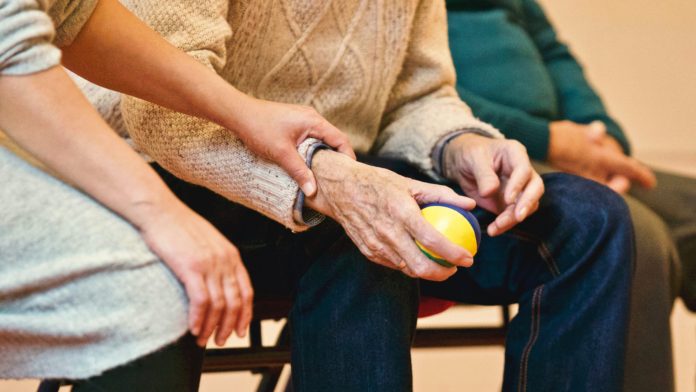Because wounds impair quality of life and increase the risk of illness and death, their treatment ranks highly on the patient-care priorities of long-term care facilities. According to the Centers for Disease Control and Prevention, more than one in ten nursing home residents have pressure sores. When wounds from causes other than pressure are factored in, the magnitude of the incidence rises considerably. Yet the large number of residents with the maladies is just one challenge facilities face in addressing the problem.
At best, wound care management is an uphill battle due to the slower natural healing process associated with aging and existing bacteria in nursing homes. Staff shortages also make successful treatment outcomes less likely. However, although the challenges are formidable and multifaceted, they aren’t insurmountable. Below are three that can be reduced with appropriate intervention.
Lack of Attention to Non-Pressure Wounds
While pressure wounds get the lion’s share of attention, about 60 percent of wounds in nursing homes stem from other causes, reports McKnight’s Long-Term Care News. These include arterial and venous ulcers, diabetic ulcers, punctures, and skin tears. Non-pressure wounds represent more than half of all wounds, but they tend to be viewed as a lower priority. Compounding the problem, wounds of this type are often more complex and require greater skill to treat.
Determining the root cause of a wound is key to good treatment outcomes. To illustrate, equipment and suboptimal positioning can lead to skin breakdown. An example would involve sitting on a vinyl sling wheelchair seat, which forces the legs to bump against each other and causes friction in the knees. Skin bruising from this friction can be prevented by inserting a cushion with a rounded bottom in the wheelchair seat.
Consistently high blood sugar slows wound healing. Nursing Home Abuse Guide states that 5 percent of diabetics develop foot ulcers, a malady that results in a toe amputation in 1 percent. Closely monitoring the fasting blood glucose of diabetics can protect against these wounds.
Skin tears occur frequently in residents, but they can sometimes be prevented. The simple practice of wearing long pants and shirts with long sleeves helps protect fragile skin tissues, notes the American Association for Retired Persons. Drinking plenty of water alleviates the dryness that makes the elderly vulnerable to skin injuries. A healthy diet provides the skin with protective nutrients, so a dietitian’s input is valuable.
Lack of Collaboration Between Wound Care Professionals and Facility Employees
Wounds are a daunting foe, so full collaboration between wound-care professionals and facility employees will maximize the likelihood of healing, says Today’sWoundClinic. Good communication is essential for employees to understand their role in carrying out treatment objectives. To prevent pitfalls and treatment delays, wound-care physicians should also be aware of various limitations inherent in nursing homes.
For instance, a facility’s wound dressing is limited to materials in its formulary. Some nursing homes have a contract with a certain wound product company that differs from the product the physician orders. In such cases, facilities often incur higher costs to procure the product, which can lead to delays in treatment and sometimes a failure in implementing the order. It’s best for the wound care physician to note in the order that brand substitutions are permitted or to specify a general dressing category rather than a specific brand.
Another problem that may arise is that a facility may not have access to a certain pressure-redistribution device. Before writing the order for it, the wound-care physician can find out what device options are available.
A wound-care physician may also write an order to leave a dressing in place until he or she visits again. This can pose a dilemma because wounds can deteriorate rapidly and adverse changes need to be addressed promptly. If the dressing is one that is highly specialized, the physician can write an order that allows the facility to change the secondary dressing, leaving the specialty product in place. Giving the facility some flexibility offers greater protection for the resident.
Lack of Competency in Interdisciplinary Team
Regardless of the type of wound, successful treatment is partly dependent upon the competency of the entire patient-care team in a long-term facility, notes McKnight’s Long-Term Care News. The team includes certified nurse aids (CNAs), who are important in early detection and prevention; nurses, who identify and predict residents particularly at risk; and therapists, who promote maximum levels of mobility and teach protocols in protective measures.
The prevention role of CNAs involves knowing the critical value of nutrition and hydration, as well as repositioning and turning. These staff members are also vital in identifying and reporting deteriorating skin conditions. Their competency can be improved through attending classes on skin and wound care developed by the interdisciplinary team as well as earning an accredited wound care certification. Training in transfers, turning and repositioning, along with instructions in range of motion exercises and splint management are beneficial.
To predict risk, nurses monitor regular turning and proper repositioning. They also change dressings and seek appropriate referrals when declines in skin conditions are noted. Other functions involve seeking input from registered dietitians when skin breakdowns occur. Like CNAs, the competency of nurses can be enhanced with in-service training in all areas of responsibility, which can include instructions from wound-care vendors. In addition, identifying a strong, competent nurse to serve as a strong peer reference is helpful.
Therapists have knowledge that assists nurses in predicting risk, and they have expertise in the appropriate measures that reduce the likelihood of skin breakdown. Their contributions to the team include teaching clinicians and residents safety practices for repositioning, which includes the correct use of positioning devices. They also change dressings, provide compression therapy and debride wounds. Their competency can be boosted by assisting in the development of restorative nursing plans to manage pain, maintain range of motion, and monitor splint use. Other strategies to improve competency are in-service training on product assessment and documentation standards.
Devoting attention to non-pressure wounds, careful collaboration between interdisciplinary team members, and ongoing efforts to raise staff competency can make a difference. Attacking the multiple challenges involved in wound care can prevent infections, amputations, and the need for surgical intervention. Indeed, concerted efforts to address the problem can even save lives.
























